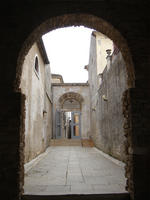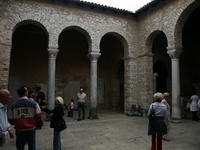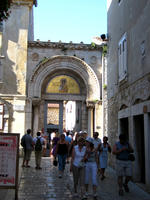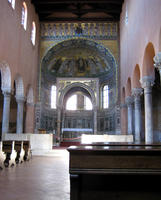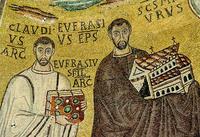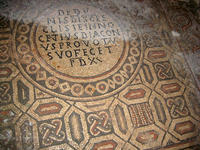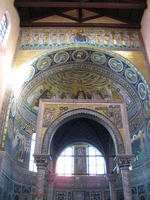You are in: Europe -> Croatia -> Episcopal Complex of... , and traditional search or Image Gallery will yield results of this site only
Episcopal Complex of the Euphrasian Basilica in the Historic Centre of Poreč
| Site number: | 809 |
|
| Type of site: | Cultural | |
| Date: | 4th century | |
| Date of Inscription: | 1997 | |
| Location: | Europe, Croatia, County of Istria | |
Up to 75 images are shown here. Click on each for more details or on Image Gallery for more images.
| Description: | Porec, which saw the establishment of Christianity as early as the 4th century, holds a group of religious monuments which form the most complete complex of its type still in existence. The site includes outstanding examples of religious architecture (a basilica, atrium, baptistery and episcopal palace), with its core basilica exceptionally combining classical and Byzantine elements. --WHMNet paraphrase from the description at WHC Site, where additional information is available. | |
| The Euphrasian Basilica (Eufrazijeva bazilika in Croatian, Basilica Eufrasiana in Italian) is a minor basilica in Poreč (in Italian Parenzo), Croatia. It was inscribed in the UNESCO World Heritage Site list in 1997. The complex, including, apart the basilica itself, a sacristy, a baptistery and the bell tower of the nearby archbishop's palace, is one of the best examples of early Byzantine art in the region. The basilica, entitled to the Virgin Mary, was built in the 6th century during the period of Bishop Euphrasius. It was built from 553 over the site of an older basilica, which had a nave and two aisles, and dated back to the 4th century. The aisles are separated from the nave by elegant marble colonnades with richly decorated capitals. The most striking feature of the basilica are its mosaic, dating from the 6th century, and which are considered amongst the finest examples of Byzantine art in the world. The mosaics over the apse represent Christ with the Apostles, with Bishop Euphrasius in the middle holding the model of the church; also local saints are depicted, including St. Maurus, the first bishop of Poreč and the Istrian diocese. In the inner part of the triumphal arch are instead medallions with portraits of female martyrs. The central mosaics represent instead the Annunciation and the Visitation. The church houses also precious holy objects and other artworks from the Palaeo-Christian, Byzantine and Middle Ages periods. --Wikipedia. Text is available under the Creative Commons Attribution-ShareAlike License. | ||
| Source: | http://whc.unesco.org/en/list/809 | |
| Reference: | 1. UNESCO World Heritage Center, Site Page. | |




